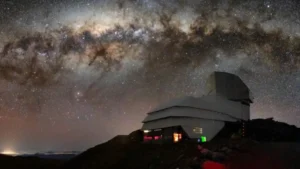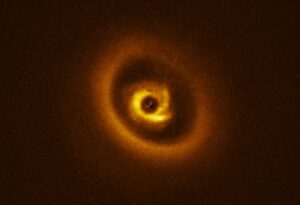Humanity couldn’t have picked a better time to pull off unprecedented close surveillance of the Sun.
Unless what we wanted to do was maintain our status quo comprehension of it.
Our central star has spent the past couple years hurling conspicuously large blasts of radiation into space. Two satellites orbiting around it have caught the brunt of the blasts — and survived to capture the details.

The Sun’s surface, as the Solar Orbiter sees it. Photo: European Space Agency
That’s resulted in a torrent of amazingly high-resolution solar images. It’s also initiated a restructure of solar physics as we know it, one researcher in the field told the journal Nature.
It’s been a colorful field of study since the record-breaking solar storms began some years ago. Booming solar eruptions have caused heat and energy to ripple through the star’s atmosphere, while a “slithering magnetic ‘snake’” writhed along its surface, as Nature put it.
“We are living in a paradigm-shifting moment for this field,” said Dan Seaton, a solar physicist at the Southwest Research Institute in Boulder, Colo.
On the spot observers
Solar observatories are proliferating, but the tandem work of two particular satellites has caused a spike in interest. NASA’s Parker Solar Probe and the European Space Agency (ESA)’s Solar Orbiter didn’t launch under any causal connections — but now, together, they help lead the field.
The NASA craft passes closer to the Sun’s surface on an elliptical orbit, skimming the atmosphere to closely monitor particle releases and magnetic fields. The Solar Orbiter maintains more distance, but its high-definition cameras capture spectacularly detailed images.
Once, in June 2022, the two spacecraft passed closely together. Noticing the opportunity, the agencies worked together to collect the first measurements on how fast temperatures rise from the Sun’s surface into its atmosphere.
The two craft also measured a huge eruption on the far side of the sun that landed a direct hit on the Parker Solar Probe. The 2021 event marked a novel type of measurement, according to researchers.
It wasn’t the last barrage the little craft would withstand. In September 2022, Solar Orbiter was tracing the giant “snake” of solar plasma along a curling magnetic field filament at around 170km per second. Then, one area it had wriggled away from suddenly detonated.
Largest eruption on record
The eruption turned out to be one of the largest, strongest solar eruptions on record, Nature reported. The coronal mass ejection (CME) faced away from Earth, but if we’d been in its path, the effect could have rivaled the destructive Carrington Event of 1859.
Both the Parker Solar Probe and Solar Orbiter figure to stay operational through the end of 2024, with the Solar Orbiter funded through 2029. More solar observatories, like Daniel K. Inouye Solar Telescope on Maui, Hawaii, add to the intrigue.

A capture from Solar Orbiter’s Extreme Ultraviolet Imager. Photo: ESA
Who knows — their observations might hold clues to the future of technologically-supported life on Earth.






